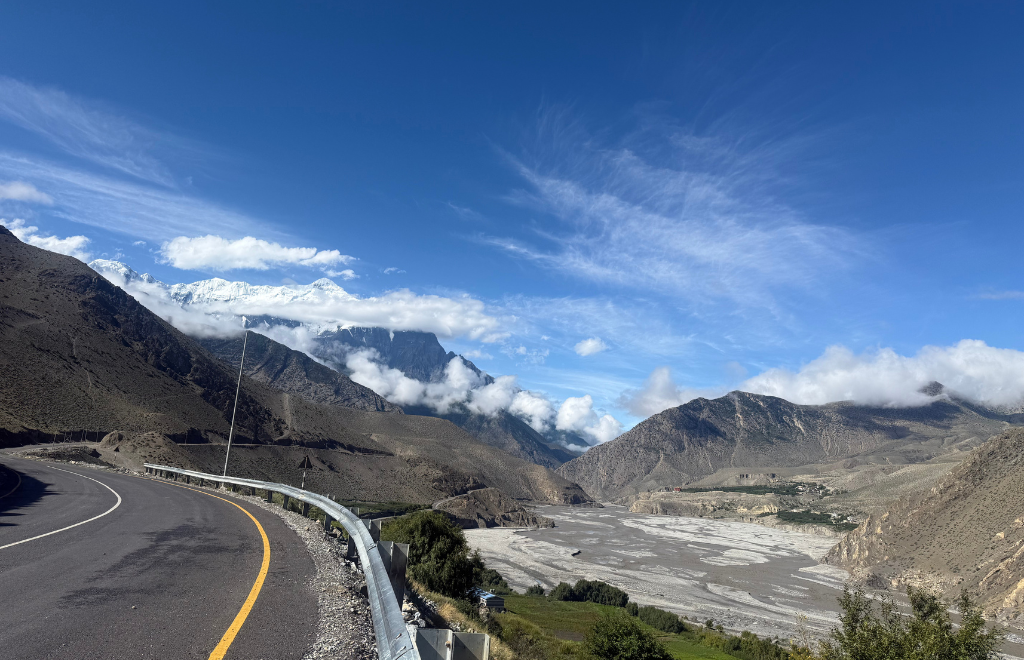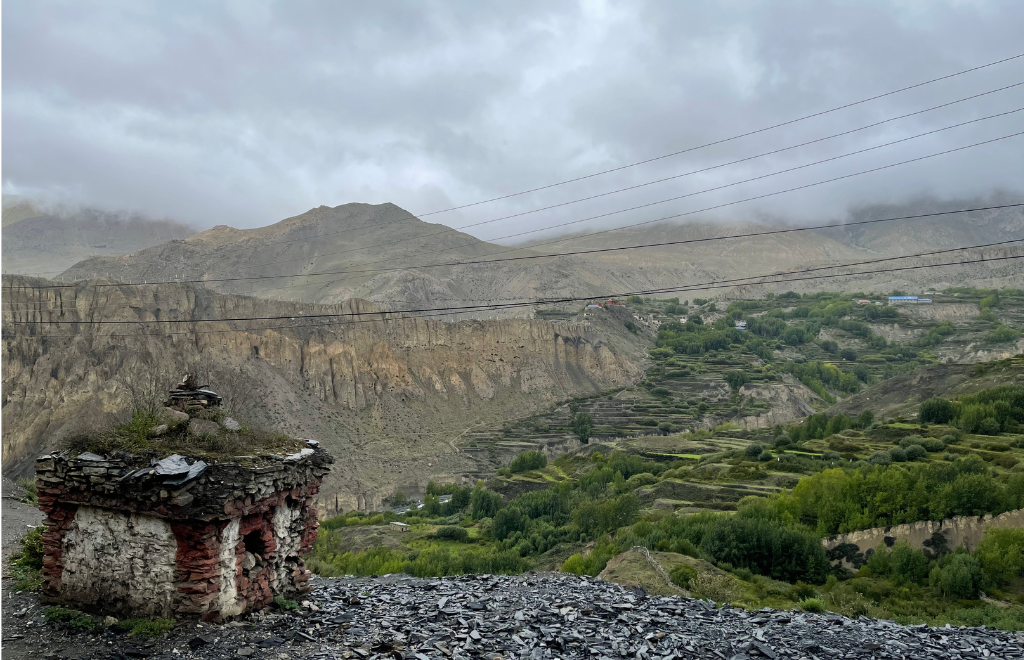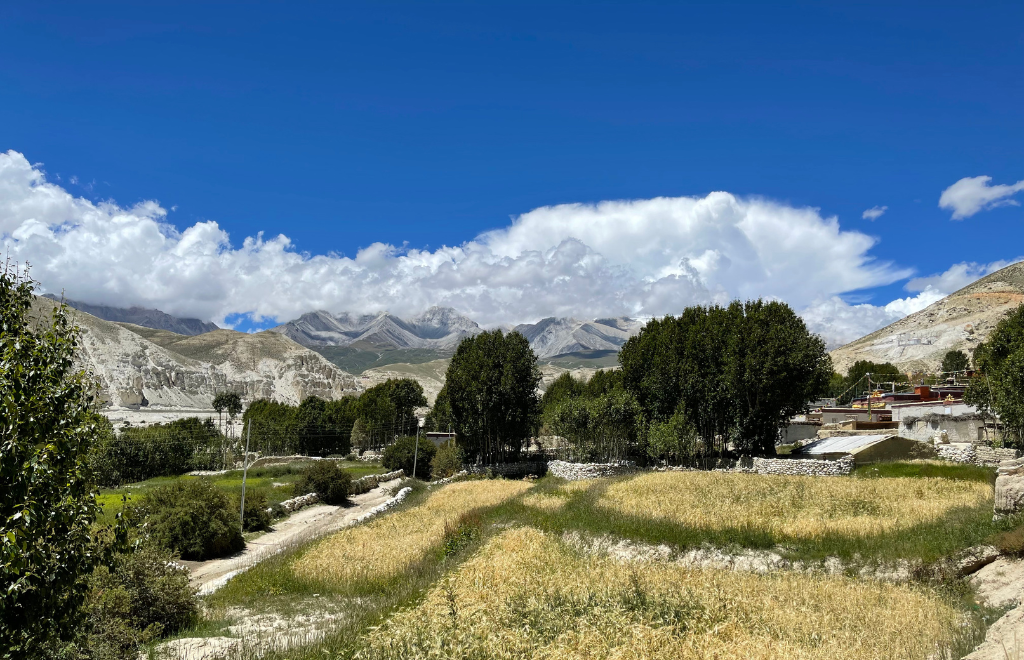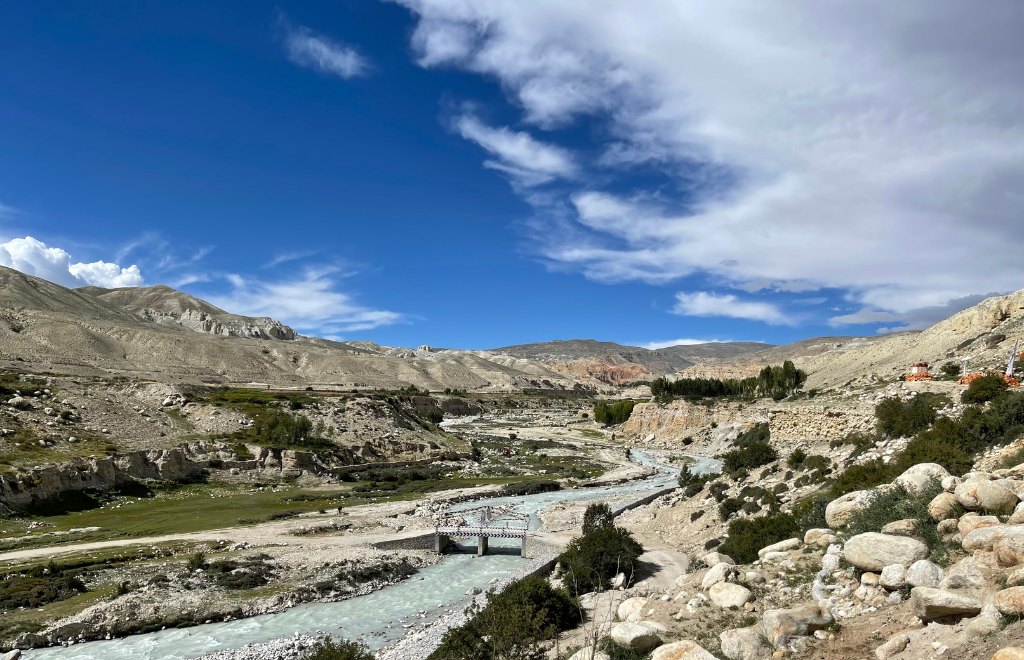Upper Mustang Valley Weather and Climate Guide: Temperatures and Best Season
Upper Mustang Valley Climate Overview
Upper Mustang is situated in a unique part of Nepal known as the trans-Himalayan region. It’s protected from summer monsoon rains by giant mountains, giving it a unique climate:
- Low rainfall – great for trekking, even in monsoon months
- Dry, desert-like landscapes, like the Tibetan plateau
- Strong afternoon winds, especially from May to September
- Warm days, chilly nights, even in summer
The valley’s altitude ranges from about 2,800m in Kagbeni to over 4,000m at high passes. The air is thinner, so temperatures drop quickly once the sun goes down.
Upper Mustang Valley Weather by Season

1. Spring (March to May)
Spring in Upper Mustang brings mild temperatures and clear skies, making it one of the best times to visit. Days are comfortably warm, while nights are still chilly. You can witness blooming wildflowers and the famous Tiji Festival, celebrated in Lo Manthang during May.
- Daytime temperature: 12°C to 20°C
- Nighttime temperature: -5°C to 5°C
- Rainfall: Minimal
- Recommended gear: Light jackets, warm layers, sun protection
2. Summer/Monsoon (June to August)
While the rest of Nepal gets drenched in monsoon rain, Upper Mustang Valley remains mostly dry, thanks to its location in the rain-shadow area. This makes it one of the few trekking destinations that is ideal even during the summer.
- Daytime temperature: 16°C to 25°C
- Nighttime temperature: 5°C to 10°C
- Rainfall: Light showers (very rare)
- Recommended gear: Breathable clothing, sun hat, hydration packs
Note: While the weather is suitable, afternoon winds can be strong, so early morning trekking is advised.
3. Autumn (September to November)
The post-monsoon period is characterized by crystal-clear skies, perfect visibility, and pleasant temperatures. Autumn is a peak season for trekkers seeking vibrant scenery and ideal lighting for photography.
- Daytime temperature: 10°C to 18°C
- Nighttime temperature: -5°C to 5°C
- Rainfall: Virtually none
- Recommended gear: Windproof jackets, thermal wear, sunglasses
4. Winter (December to February)
Winter in Upper Mustang Valley can be harsh, especially at higher elevations. While the skies remain mostly clear, temperatures drop significantly, and snowfall can block access to Lo Manthang. However, fewer tourists and raw natural beauty appeal to seasoned adventurers.
- Daytime temperature: -5°C to 5°C
- Nighttime temperature: -10°C to -20°C
- Snowfall: Occasional, especially in January
- Recommended gear: Heavy down jackets, insulated boots, gloves, and sleeping bags rated for -20°C
Monthly Temperature Guide – Upper Mustang Valley
Before you pack your bags, here’s a quick month-by-month look at what to expect. Keep in mind that higher altitudes will be colder.
| Month | Avg. Day Temp | Avg. Night Temp | Conditions |
| January | 3°C | -15°C | Cold, possibly snow |
| February | 5°C | -12°C | Cold, dry skies |
| March | 10°C | -2°C | Mild, clear skies |
| April | 15°C | 2°C | Warm days, cool nights |
| May | 20°C | 5°C | Sunny, windy afternoons |
| June | 22°C | 10°C | Dry, windy, festival season |
| July | 21°C | 10°C | Warm, dry mornings |
| August | 20°C | 8°C | Warm, occasional cloud |
| September | 18°C | 6°C | Clear skies, cool nights |
| October | 15°C | 3°C | Ideal trekking conditions |
| November | 10°C | -2°C | Crisp air, cold nights |
| December | 5°C | -10°C | Cold, quiet trails |

When Is the Best Time to Visit Upper Mustang Valley?
The ideal time to trek in Upper Mustang Valley is spring (March–May) and autumn (September–November), when the weather is clear, temperatures are moderate, and the trails are in great condition, as well as the greenery is abundant.
For a unique cultural experience, visit during the Tiji Festival in May and between June and August—Upper Mustang stays mostly dry despite summer.
Winter (December–February) is cold with limited facilities but offers peaceful, snowy landscapes for experienced trekkers seeking solitude.
Checklist for Visiting Upper Mustang Valley
If you’re planning a trip to Upper Mustang Valley, here’s what to pack based on the weather and temperature:
General Gear:
- UV-protection sunglasses
- SPF 50+ sunscreen & lip balm
- Windproof jacket
- Trekking poles
- 4-season sleeping bag
Seasonal Clothing:
- Spring/Autumn: Layered clothing, light fleece, sun hat
- Summer: Breathable long sleeves, lightweight jacket
- Winter: Down jacket, thermal base layers, woolen cap
Altitude Preparedness:
- Acclimatization plan
- Diamox
- Water purification tablets
- Hydration bladder or water bottles
Electronics:
- Power bank
- Solar charger
- Extra batteries (cold drains battery fast)
How Weather Affects Trekking in Upper Mustang Valley
The weather greatly influences your trekking experience in Upper Mustang Valley.
- Strong winds: Afternoon winds can be fierce, so it’s best to start trekking early when conditions are calmer.
- Big temperature swings: Warm sunshine during the day can quickly turn to cold at night — packing layers is a must.
- Trail conditions: The trails are mostly dry year-round, but winter snow can sometimes block mountain passes.
- High altitude: The thin air makes even sunny days feel cool, so be prepared for sudden drops in temperature.
Being aware of these weather factors ensures a safer, more comfortable trek in Upper Mustang Valley.
Experience Upper Mustang Valley with A1 Excursion Adventure
At A1 Excursion Adventure, we make sure your Upper Mustang trek is safe, comfortable, and unforgettable. Our Upper Mustang Valley packages:
Whether you want to see the Tiji Festival, trek under autumn skies, or explore during spring bloom, we’ll help you experience Upper Mustang Valley at its finest. Contact us today!!

Final Thoughts: Preparing for the Weather in Upper Mustang Valley
Understanding the weather and temperature of Upper Mustang Valley is crucial to planning a safe, enjoyable, and successful trek. Thanks to its unique high-altitude desert climate, Mustang is accessible even when other parts of Nepal are not. With the right gear and timing, the Upper Mustang trek is one of the most rewarding Himalayan adventures you’ll ever experience.
A1 Excursion Adventure is waiting for you to organize your trek for a lifetime experience.
FAQs Frequently Asked Questions
1. Is it safe to trek in Upper Mustang in winter?
Yes, but only for experienced trekkers. Expect harsh cold, closed teahouses, and snow-covered trails.
2. Why is Upper Mustang drier than other parts of Nepal?
It lies in the Himalayan rain shadow, blocking monsoon clouds, leading to minimal rainfall.
3. What’s the ideal time for photography in Upper Mustang Valley?
Autumn and spring offer crisp visibility and stunning contrasts in the landscape.
4. Does it rain during the summer in Upper Mustang?
Very rarely. Unlike other parts of Nepal, Upper Mustang sees very little or no rainfall in the monsoon.
5. What to wear for the Upper Mustang trek in October?
Layered clothing, a down jacket, a warm hat, gloves, and sturdy trekking boots are essential.
6. How windy does it get in Upper Mustang?
Afternoon winds can reach up to 40 km/h, especially in the Kali Gandaki Gorge area.
7. Is the Tiji Festival affected by the weather?
No, it is usually held in late spring (May) when the weather is pleasant and stable.







-1.webp)
-1.webp)
.webp)